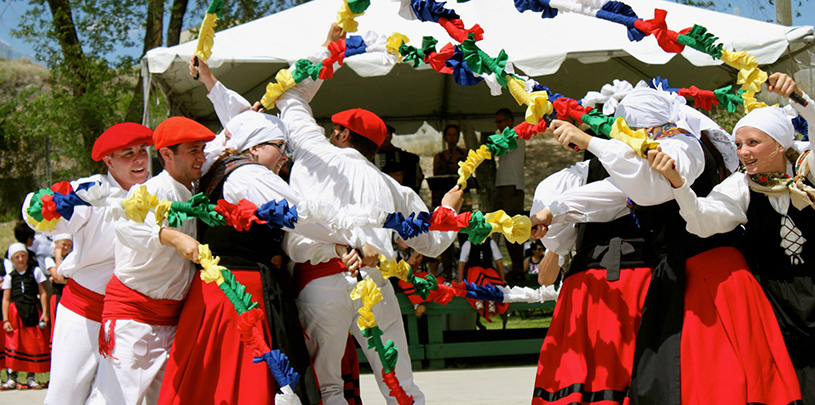
 A guest blog by Uplift Organizer Marcel Gaztambide
A guest blog by Uplift Organizer Marcel Gaztambide
Growing up in the Utah Basque Club, I was raised among the high kicks, pointed toes, and spirited lunges of the Utah’ko Triskalariak—a beautiful bunch of bullheaded Basques bent on inflicting their silly clothes, strange ways, and traditional dances unto the world. Through participation in everything from small, local get-togethers to large, international festivals, I learned that being Basque is largely about celebrating your culture as loudly and as often as possible. Herein lies the secret to Basque longevity: our communities still exist largely because we make a point of celebrating our existence, and since traditional dance is central to most Basque celebration, it’s an important way that we grab hold of our cultural identity and shimmy it along into the future.
Another consequence of this excessively Basque upbringing (besides always having a back-up Halloween costume) is the understanding that celebration plays an important role in preservation, and that dance, like other art forms, can be mysteriously powerful.

Terry Tempest Williams offered an important sentiment when she told me that although conservation is often considered a fight, she prefers to think of it as a dance. She explained that the problem with calling something a “fight” is that it presupposes the need for winners and losers. In fights, people end up wounded, feeling slighted, possibly seeking revenge. Dancing, however, requires balance, partnership, and trust, and it implies a willingness to step forward and back while recognizing that everyone is occupying the same space and moving in the same direction.
The organizers of Uplift 2016, a climate conference for young activists on the Colorado Plateau, recognize this idea as crucial in an increasingly polarized world. It’s something that we hope to employ in a new kind of conservation effort.
At a time when the world’s wildest, most authentic landscapes are at their most vulnerable, perhaps the lessons of Basque perpetuation and thinkers like Terry have something to offer. Imagine, for example, that when changes to public policy threatened the loss of our public lands, the reliability of our water resources, or the quality of our air, an energetic group of dancers would appear in practiced formation, persistently causing a ruckus in celebration and defense of their homes.
The organizers of this year’s Uplift conference plan to set the stage for this new kind of “climate dance,” choreographed and performed by a diverse community of youth that are capable of both emphatic celebration and substantive discussion. We envision the myriad young voices of the Colorado Plateau being uplifted in a way that allows us to voice our concerns, declare solidarity in our principles, and demand that our ideas for the future be taken seriously.
In preparation for our main conference held August 18th-20th, Uplift will soon be hosting a series of community meetings across the plateau, inviting young people to join the dance and share their ideas. The leaders of Uplift first became involved with this project because we recognized the need for better, more inclusive conversations. We can no longer afford to allow the implementation of policies that ignore the realities of climate change, the finite nature of resources, or the constant diminishment of wild spaces. It’s our hope that these meetings, and the conference in August, will allow for previously excluded voices to be included in the crafting of policies affecting our future.
So please join us! For more information, contact the Uplift organizers at uplift@grandcanyontrust.org or follow us on Facebook for important updates.
*Marcel Gaztambide is an editorial assistant at the Journal of the American Chemical Society who moonlights as a part-time ranch hand, and Basque dancer.
The federal government will determine if the charismatic blue bird should be listed as threatened or endangered.
Read MoreWe can’t wait to meet you in a canyon, along a creek, or in the high alpine meadows of the Colorado Plateau.
Read MorePronghorn and barbed wire fences don't mix, but volunteers are working to change that, one wire at a time.
Read More